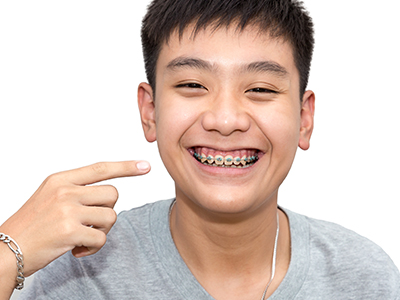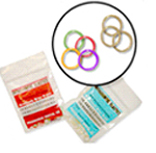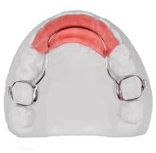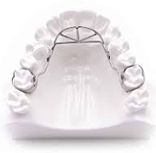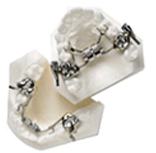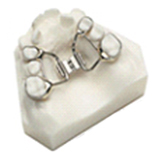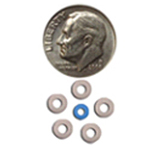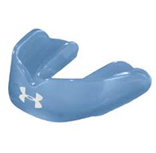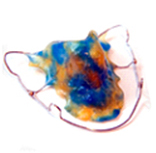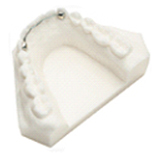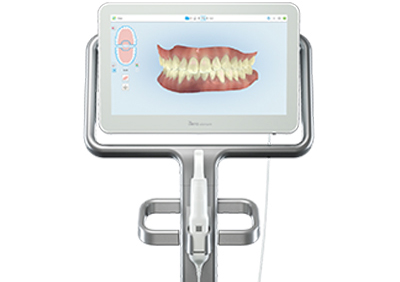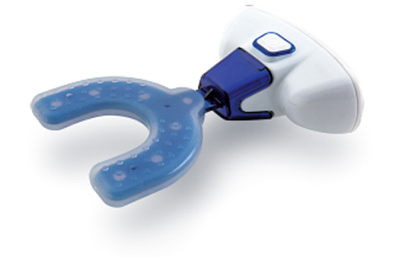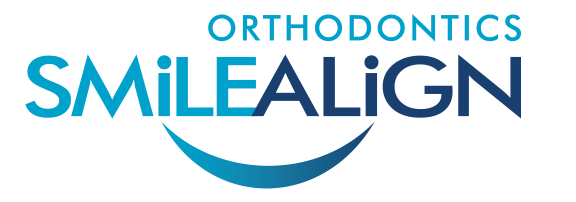

Did you know that issues affecting the alignment of your children’s teeth and the growth of their jaws can be identified as early as the first or second grade? That’s why the American Association of Orthodontists recommends that children meet with an orthodontic specialist no later than age 7.
At this consultation the orthodontist will examine your child’s bite and assess how well the teeth are erupting to identify any concerns. In addition, this exam will determine if any premature tooth loss, habits, or breathing patterns are affecting your child’s dental development. The orthodontist will advise you if immediate preventative orthodontic care is needed or if your child can be observed until a later time.
For some young children habits such as thumb sucking, low tongue posture, and certain breathing patterns can distort the bite. In these situations care is best started at a younger age. Early treatment is also helpful when the top jaw is too narrow or is not developing in harmony with the lower jaw, such as an under-bite. Your orthodontist may also consider early care for a young child whose front teeth protrude excessively or are severely crowded.
Objectives of early treatment are straightforward: to create more space for crowded teeth, to help correct harmful habits, to improve the bite by influencing jaw growth and to improve facial cosmetics. These treatments can often lessen the need for extracting permanent teeth.
It is important to know that patients who receive early orthodontic treatment generally still need full braces or clear aligner treatment once all adult teeth erupt; however early treatment can shorten and simplify future orthodontic care.
Orthodontic treatment for children often begins between the ages of 9 and 12. During this phase of growth most kids have a mix of permanent and baby teeth. The orthodontic process is beneficial at this stage because it can improve the alignment of the existing permanent teeth, guide the incoming new adult teeth into position, and utilize the child’s growth and development to best advantage.
A large percentage of all orthodontic patients are teenagers. At this stage of development most of their permanent teeth, with the exception of the wisdom teeth, have already erupted into place. At this time, the orthodontist can identify any teeth or bite alignment issues, making your teen an excellent candidate for orthodontic care.
The teenage years are typically a time of significant physical and emotional development. Teens acquire a more mature appearance, along with a heightened sense of self-awareness, growing self-confidence, and a greater investment in peer relationships. Crooked, gapped, crowded, or protruding teeth can have a negative impact on their self-image and self-esteem. In addition, a poor bite can predispose teens to TMJ issues, headaches, and ultimately dental disease.
Helping your child or teen to gain a well-aligned, more pleasing and healthier smile means making a commitment to orthodontic care. We believe that a beautiful smile is well worth the time and dedication invested in wearing an orthodontic appliance.
Thanks to advances in modern orthodontics, today’s image-conscious tweens and teens can choose from a wide selection of braces or clear aligners that are far less bulky, much less noticeable, and more comfortable than ever before.
Thanks to advances in dental technology, greater access to care, and an increased awareness of the benefits of a beautiful and healthy smile, more adults than ever are choosing orthodontic care.
There are many treatment options available to adults these days, and today’s clear aligners and braces offer greater convenience and comfort - and are less visible than ever before. Bulky metal braces are truly a thing of the past. The latest generation of metal appliances are computer designed to be smaller and more comfortable. Of course we also offer cosmetic options including removable clear aligners and tooth-colored ceramic braces which can both produce beautiful results.
Although adult orthodontics requires an investment of time and resources, we believe the ultimate reward of a beautiful smile is well worth the effort. Teeth that look good and function well can be enjoyed at any age. We think you’ll agree that a healthy and attractive smile is priceless!
An innovative, discreet, and effective system of care, Invisalign® treatment offers a cosmetic way to align your smile with minimal interference to your daily activities. Aligners are practically invisible, so no one but you will know that you’re wearing them!
Invisalign is a unique process that uses 3-D computer imaging technology to guide each patient’s treatment. A complete sequence of custom-made clear aligners, based on the exact specifications of your teeth, incrementally move the teeth into place until the final desired corrections are reached.
As pioneers in the field of aligner development and technology, the folks at Align Technology gather data from millions of treated smiles to design treatment systems that:
And, because Invisalign clear aligners are removable for short periods of time, you can still enjoy the foods you love as well as brush and floss your teeth with ease!
Remember, a beautiful smile begins today! Contact our office for more information and to schedule a consultation for care.
Metal braces remain the most common type of orthodontic appliance. Made of medical-grade stainless steel, we at SmileAlign use a “micro” brace version that is up to 30% smaller than other metal braces. This lower profile makes these braces more comfortable and more attractive. During treatment each brace is individually bonded to the front of each tooth. With metal braces the patient has the option of adding colored elastics for a more unique and colorful smile.
For those who want a more cosmetic appearance, ceramic braces are an excellent alternative to metal braces. Ceramic braces, or clear braces, blend in with the natural color of your teeth. Although they are far less visible than metal braces, they deliver the same outstanding results. This type of brace is also a great alternative for patients who are not comfortable using removable clear aligners like Invisalign.
Whether you choose metal or ceramic braces, it is very important to continue to visit your dentist’s office at least every 6 months for regular professional teeth cleanings and exams during your orthodontic treatment.
For a completely successful outcome, you need to work together with your orthodontist. The teeth and jaws can only move toward their corrected positions if the patient consistently uses his or her appliances as prescribed. Following are some of the more common types:
The purpose of wearing elastics (rubber bands) as instructed is to improve the fit of your upper and lower teeth. It reduces time in treatment and improves your result.
These appliances are used to improve a deep overbite. They prop open your bite, so that you will not be able to contact your back teeth when biting. This allows the back teeth to erupt and reduces the overbite of your front teeth. We advise our patients to eat soft foods while adapting to a new bite plate.
These appliances are used to help control habits such as thumb sucking and poor tongue placement, which often lead to an open bite. When using these appliances, patients should keep their lips closed and place the tip of their tongue against the roof of their mouth.
This fixed appliance is used mostly by younger, growing children. Worn for about 12-15 months, it reduces overbite by encouraging the lower jaw to move forward and the upper molars to move backward.
The palatal expander is used in treatment to widen your upper jaw. It applies gentle pressure on the upper molars each time an adjustment is made. Your orthodontist will instruct you when and how to adjust your expander. When the desired expansion is achieved, the appliance still must be worn for several months to solidify the expansion and prevent relapse.
Separators are little rubber doughnuts that may be placed between your teeth to push them apart so that orthodontic bands can be inserted during your next appointment. Before the bands are placed, the separators will be removed. While wearing separators do not eat gum or sticky candies. You can brush normally and floss between all teeth that do not have Separators.
It’s extremely important to protect your braces from damage and to guard your mouth from injury. For example, wearing a mouthguard while participating in sports is a great way to safeguard your appliance – and your smile. It is important that your mouthguard is specifically designed to fit over your braces. Our team will help you select the most suitable one.
Thanks to your effort and cooperation you have straight teeth and a great smile. Your new retainers will allow the bone to mature and tighten around the teeth so they remain that way. These retainers must be used for at least two years, during which time you will return to our office so we can check their fit.
Removable retainers come in two forms. A Hawley retainer is an acrylic appliance with a single wire that sits in front of the teeth to keep the corrections in place. The other type is a clear plastic “invisible” retainer, which is called an Essix retainer, and fits like a shell over the teeth.
In almost every case we also recommend a fixed retainer, a thin flat wire that is attached to the back of the front teeth. It remains in place indefinitely and does not show when you smile. This type of retainer is recommended when there’s a high risk of teeth reverting to their former position, especially common for the lower front teeth, or when front spaces existed before treatment. A fixed retainer is the best option for long-term stability.
Removable Retainers:
Please call the office if your retainers get lost, damaged, or simply do not fit.
Bonded Retainers:
These are bonded onto the back of your teeth and will stay on indefinitely. If any part of this retainer becomes loose or you feel a sharp edge, please call immediately for repair.
We will show you how to use SOFT PICKS or SUPERFLOSS to clean around the bonded retainer.
For those who have completed treatment with us, it has been our pleasure serving you. We hope that you are happy with your new smile and the treatment you have received here. Know that we always welcome new patients to our office. Truly the best compliment you can give us is to recommend our care to your friends and family.
Our practice employs a state-of-the-art iTero® Intraoral Scanner. This high-tech digital tool allows us to obtain detailed 3-D digital images of your teeth and bite, providing precise and comfortable care.
The scanning process utilizes an ergonomically designed wand which generates highly accurate 3D models by capturing and integrating multiple digital images. Precise information is generated which leads to better treatment outcomes and a far more pleasant experience than conventional dental impression methods.
In some cases, particularly with teeth which are more challenging to move, we offer various supplemental treatment options to help accelerate tooth movement. We will discuss these options with you in situations where we feel it would be beneficial to your case. Should you want to explore some of these options, just ask us.
With advanced training in the field of dentofacial orthopedics, our orthodontist is well versed in temporomandibular joint (TMJ) function and understands the complex relationship of dental bite and jaw development on joint health.
Connecting the jaw to the skull just in front of each ear, temporomandibular joints are complex structures that allow for oral function. These joints are well equipped to handle the normal stress of chewing; however, overuse, inflammation or injury can cause issues.
A risk of developing TMJ problems increases with (among other factors) teeth grinding, clenching or degenerative changes associated with arthritis and other inflammatory musculoskeletal disorders. There are a wide range of uncomfortable and debilitating symptoms associated with TMJ disorders. Examples are: clicking, cracking or popping of the jaw, earaches, ringing in the ears (tinnitus), headaches, facial pain, back and neck pain, and muscle spasms which can lead to jaw locking and limited jaw movement.
The evaluation process for a TMJ disorder, or TMD, begins with our orthodontist reviewing your medical and dental histories. This is followed by a thorough clinical assessment of joint symptoms and function. If needed, you will also undergo special radiographic imaging and other diagnostic tests.
Depending on the diagnosis, treatment may include oral appliances such as nightguards or stabilization splints to alleviate strain on the joints. We may also recommend a bite adjustment or more comprehensive orthodontic care to achieve long-term bite improvement and to facilitate joint recovery and function. To help relieve symptoms, we may also recommend stress reduction methods, relaxation techniques and medications.




